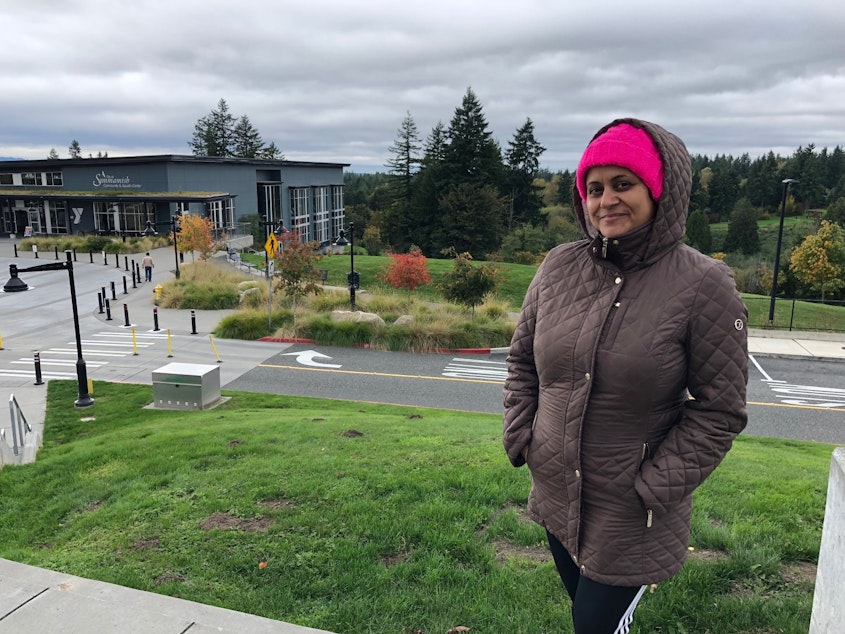What Sammamish's high median income really means

The Seattle Times reports that Sammamish is the nation's richest city. Its median household income of $183,000 even beats San Francisco.
We wondered – what’s it feel like to live in a city that rich?
Becca Reed lives in Sammamish, amid all that abundance. But her world is more defined by lack of resources.
She feels the lack of enough money to stave off rising property taxes, so she continues to work as an interior designer at age 72.
She feels the lack of blue collar tradespeople to work on the homes she designs, who must drive long distances from places like South King County.
And she feels the lack of young people willing or skilled enough to work in the fast food restaurants her husband manages.
"One kid looked at me and he didn't know how to use a can opener," she said, "because the maid does that. Kid didn't know how to sweep — 18 years old!"
Sponsored
Reed said the young people do know how to spend, though. “These kids are going into Starbucks and they’re buying $8, $9, $12 drinks every day!”
The presence of wealth in a community can make it hard to parent, said Vaishali Kaushik, whose husband works at a nearby technology company. She took a hard line with her 11-year-old son who wanted his own mobile phone — no.
"He asked me why," she said. “Then I said, 'It’s not necessary for you. If you want, then you should earn.'"
She told him once he's in high school, if he still wanted the phone, he'd have to get a part-time job.
Kaushik said it's important for her children to learn the value of money, even in an affluent city such as Sammamish. It's a lesson she learned growing up in India.
Sponsored
Median income can be a confusing term. Imagine you lined up everyone in Sammamish and arranged them in ascending order of household income. Then, you pulled out the person in the middle of the line. That person's income would be the median income. Some people earn much more. But some earn far less.
That spread between the haves and the have-nots has put a strain on people.
At Sammamish City Hall, communications manager Sharon Gavin said many kids in Sammamish suffer from an abundance of anxiety.
"The anxiety comes from kids wanting more and trying to fit in," she said. "It's hard to fit in if you're not wearing the right clothes, if you're not driving the right car, if you're not driving a car at all."
That can lead to other problems.
Sponsored
"We're looking at, with the gap in income, how that is something that leads to more bullying in the schools," she said.
Addressing that problem requires more counselors in schools and more resource officers, said Sammamish Deputy Mayor Karen Moran, but "it's expensive, and there's never enough."
Sammamish households’ median income beat out every other large U.S. city including New York, San Francisco and Seattle, reports Gene Balk of the Seattle Times.
The percentage of the population living in poverty has held steady at about 2.5 percent in recent years. That's about a quarter of the rate in the larger Seattle-Bellevue-Tacoma metro area.




